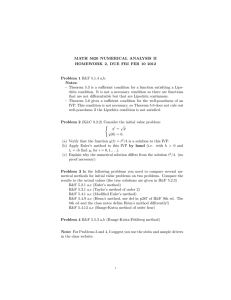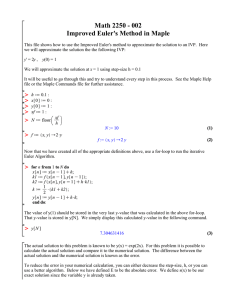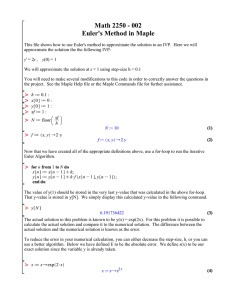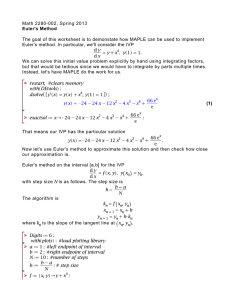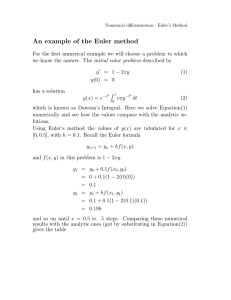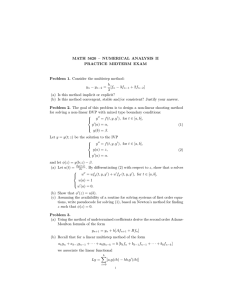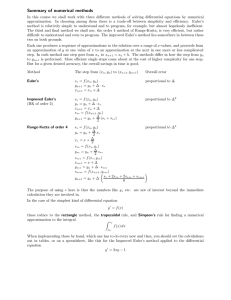MATH 5620 NUMERICAL ANALYSIS II HOMEWORK 1, DUE FEBRUARY 1ST 2010 Notes:
advertisement
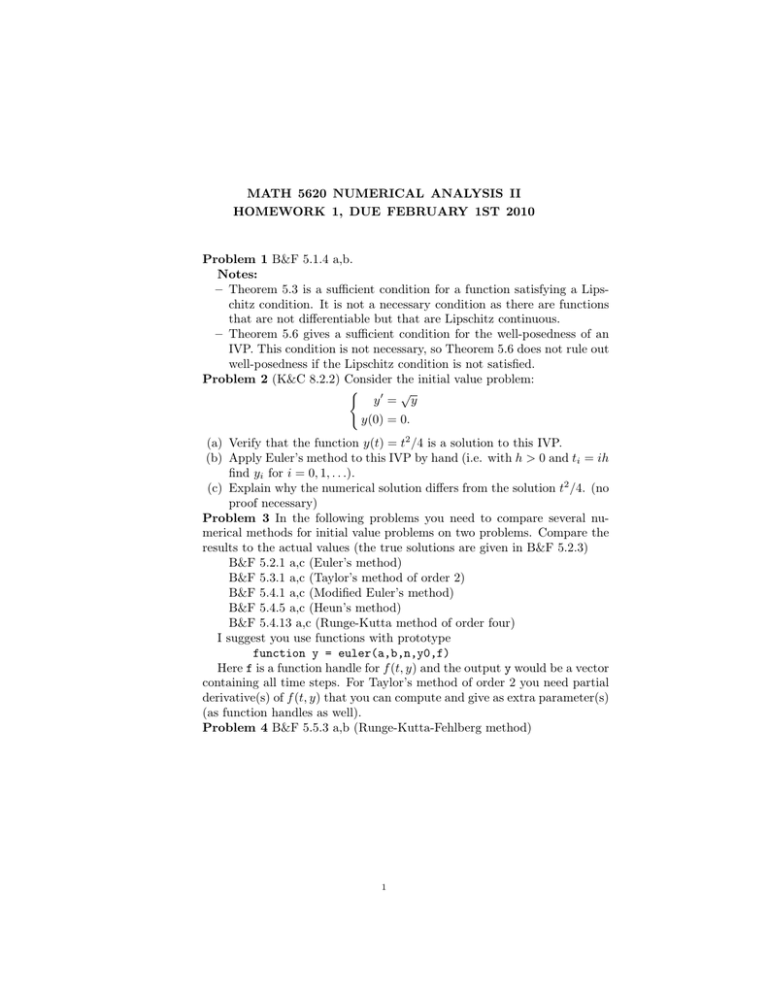
MATH 5620 NUMERICAL ANALYSIS II HOMEWORK 1, DUE FEBRUARY 1ST 2010 Problem 1 B&F 5.1.4 a,b. Notes: – Theorem 5.3 is a sufficient condition for a function satisfying a Lipschitz condition. It is not a necessary condition as there are functions that are not differentiable but that are Lipschitz continuous. – Theorem 5.6 gives a sufficient condition for the well-posedness of an IVP. This condition is not necessary, so Theorem 5.6 does not rule out well-posedness if the Lipschitz condition is not satisfied. Problem 2 (K&C 8.2.2) Consider the initial value problem: ( √ y0 = y y(0) = 0. (a) Verify that the function y(t) = t2 /4 is a solution to this IVP. (b) Apply Euler’s method to this IVP by hand (i.e. with h > 0 and ti = ih find yi for i = 0, 1, . . .). (c) Explain why the numerical solution differs from the solution t2 /4. (no proof necessary) Problem 3 In the following problems you need to compare several numerical methods for initial value problems on two problems. Compare the results to the actual values (the true solutions are given in B&F 5.2.3) B&F 5.2.1 a,c (Euler’s method) B&F 5.3.1 a,c (Taylor’s method of order 2) B&F 5.4.1 a,c (Modified Euler’s method) B&F 5.4.5 a,c (Heun’s method) B&F 5.4.13 a,c (Runge-Kutta method of order four) I suggest you use functions with prototype function y = euler(a,b,n,y0,f) Here f is a function handle for f (t, y) and the output y would be a vector containing all time steps. For Taylor’s method of order 2 you need partial derivative(s) of f (t, y) that you can compute and give as extra parameter(s) (as function handles as well). Problem 4 B&F 5.5.3 a,b (Runge-Kutta-Fehlberg method) 1
